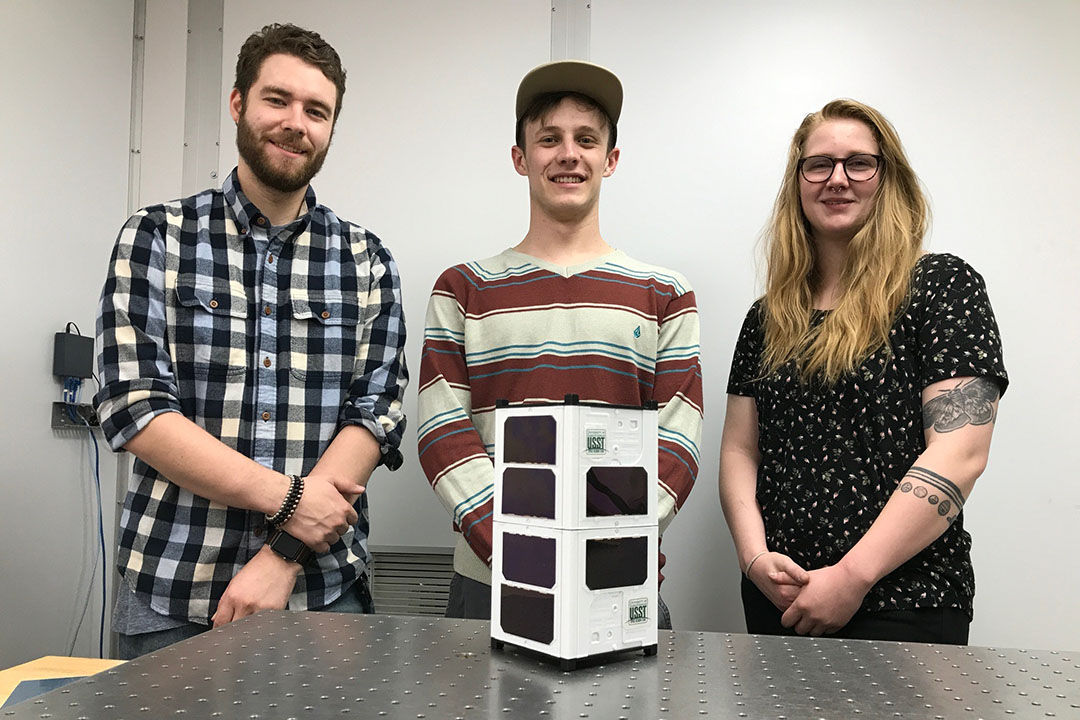
Preparing for launch
In what will be Saskatchewan’s first student-designed satellite mission, a University of Saskatchewan-led space design team has been chosen by the Canadian Space Agency (CSA) to design, build, launch and operate a small cube-shaped research satellite for launch by rocket in 2021.
The satellite will study how materials degrade in space. The announcement was made today via teleconference by Canadian astronaut Jenni Sidey at a national event in Winnipeg that involved members of 15 successful teams.
A multi-disciplinary team involving more than 40 USask students from engineering, computer science, physics and business, as well as several students from Saskatchewan Polytechnic (Sask Polytech), has been awarded $200,000 in the CubeSat competition. The CSA will also cover costs associated with the CubeSat space launch.
“We’re delighted to support these talented students in carrying out these exciting, collaborative, and hands-on space science projects,” said Karen Chad, USask Vice-President Research. “USask has a proud history of research and training success in space and atmospheric science, and the skills our students will develop during these unique projects will enable them to enter Canada’s workforce with exemplary training, experience and passion for discovery and innovation.”
“This funding is transformative for a group of brilliant students who have done an exceptional job of multidisciplinary collaboration and mentoring of junior team members,” said USask College of Engineering Dean Suzanne Kresta. “They truly have put Canada on the map among an elite international group of students and universities.”
The U of S Space Design Team will now need to raise an additional $200,000 to match the CSA funds. USask, Saskatchewan Polytechnic, and companies in the private sector such as SED Systems and Innocorps Research Corporation have already provided cash or in-kind support, and additional fundraising options are being explored.
The USask satellite will involve two 10cm X 10cm X 10cm cubes attached together—roughly the size of two Rubik’s cubes. Once tested, the tiny satellite will be launched to and deployed from the International Space Station to study how materials—ranging from ceramics to space suit fabrics—degrade in space.
The project will look at how potentially useful construction materials are affected by extreme temperatures, radiation, and space debris in low Earth orbit, said co-lead investigator Doug Degenstein, professor of engineering physics.
“The students will study material changes in colour, texture, brittleness, and electrical conductivity. The results of the study could lead to more cost-efficient solutions for the space sector,” said Degenstein who is lead researcher for the satellite instrument OSIRIS (Optical Spectrograph and InfraRed Imager System) that was CSA’s contribution to the multi-national Odin space mission.
To support the USask Space Design Team’s CubeSat project, visit: give.usask.ca/USST
Read the full story.

